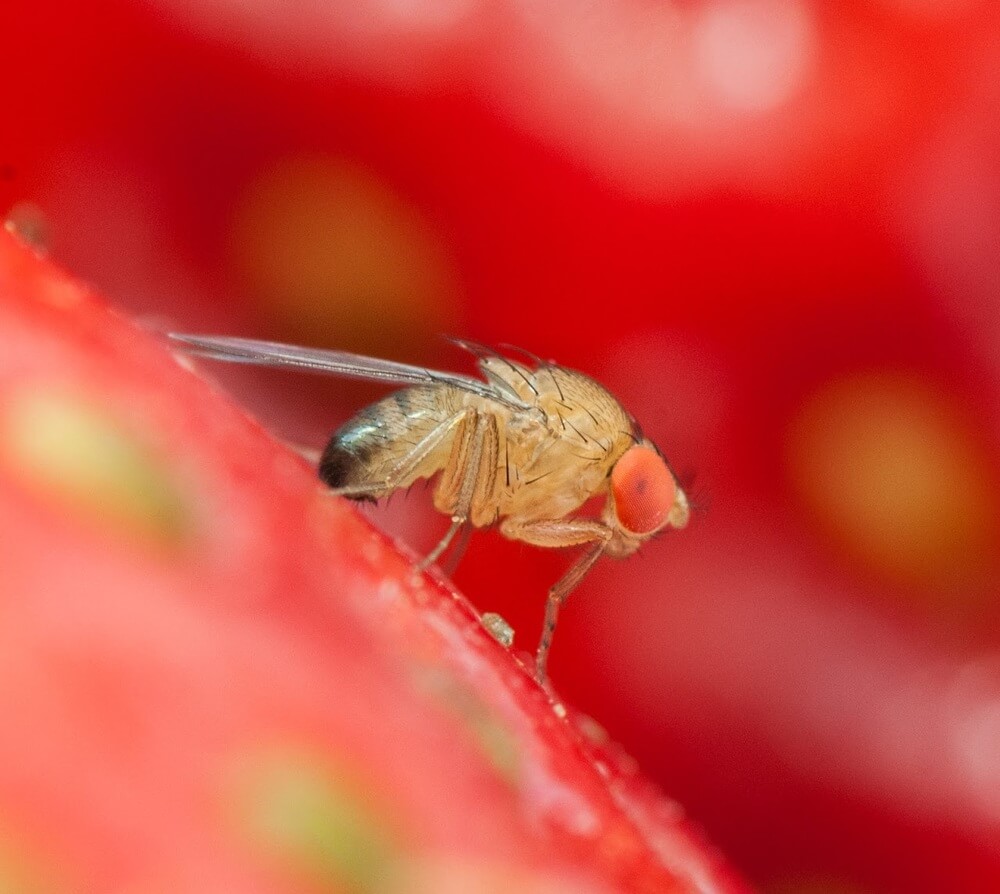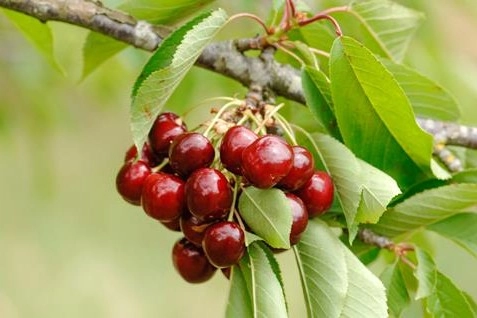The biocontrol of Drosophila suzukii using the 'sterile insect' technique bodes well: soon we may have a new weapon in hand to combat the insect that is causing sleepless nights not only for cherry growers but also for producers of, for example, strawberries and small fruit.
The insect, which arrived from the East, was first spotted in Italy in 2009, followed by Spain, and is now present practically all over Europe. In France, where it was identified in 2010, researchers are carrying out trials with this technique, which has the advantage of being environmentally sustainable.
The results of the latest trials (2023 season) were presented during an event organised by the CTIFL research organisation entitled 'Rencontre technique protection des vergers de cerisiers contre Drosophila suzukii'.
Cherry growing in France, declining hectares
According to official data from the French Ministry of Agriculture and Food Sovereignty, cherry production in 2023 dropped by 12% compared to 2022, and areas dropped by 1%. The drop in production was partly due to bad weather, partly to the pressure of Drosophila suzukii.
According to official data, there were 7,544 hectares under cherry orchards in 2022 and production stood at 37,829 tonnes. The cherry orchard areas are continuously decreasing: in the year 2000, 12,100 hectares were cultivated. Today, cherry cultivation in France accounts for 4% of fruit growing and is mainly concentrated in the South, in the Auvergne-Rhȏne-Alpes and Provence-Alpes Cȏte-d'Azur regions.
SIT, a promising technique
The 'sterile insect technique' (SIT) is based on the flooding by launching previously sterilised males of the species, i.e. those unable to fertilise. This is done by breeding the insect and mass-producing the males. The pupae are sterilised by various techniques, among them irradiation by ionising X-rays.
In the past, SIT has been successfully used against other key pests, for example against the Mediterranean fruit fly (Ceratitis capitata) and apple carpocapsa. SIT has numerous advantages, it is a very specific method that has a long-term effect on the treated areas, it allows otherwise inaccessible areas to be reached and it can be used in synergy with other defence methods.
Drosophila suzukii is an insect, a tiny midge, capable of causing substantial damage to production. The female lays her eggs inside the fruit by means of an ovipositor, inside the fruit the new generation of Drosophila suzukii develops. The consequence is that the fruit is not marketable.
It is a particularly dangerous phytophage because it has a high reproduction potential, each female laying between 300 and 400 eggs in its lifetime. At present, D. suzukii is combated with the use of insect nets, chemistry and agronomic techniques.
An exotic natural antagonist (Ganaspis brasiliensis) has been identified, but its use is still in the experimental and development phase. SIT, the 'sterile insect technique', once validated, could effectively deliver a new weapon into the hands of cerasiculturists.

The French 2023 experiment, inconclusive results
Presenting the results of the experiments carried out in 2023 in France was Ghais Zriki, researcher at CTIFL (the slides of his report can be downloaded at this LINK).
In 2022, CTIFL in collaboration with another research institute, Inrae, had already carried out the first release experiments, on a strawberry cultivation carried out in glass-enclosed greenhouses. The results had shown that releasing sterile males for 5 weeks had significantly reduced the D. suzukii population and consequently the rate of infested fruit.
In 2023, the researchers worked in open tunnels, again in strawberry production. The aim was to develop techniques for a semi-massive rearing of Drosophila suzukii and to evaluate the impact of releasing sterile males on the D. suzukii population. The trial was carried out on 4 farms located in the South of France.
The releases went on for 8 weeks resulting in a ratio of sterile to wild males that never exceeded 0.6%, when the recommended density is 40. The experiment saw an average infestation rate that did not differ much between the tunnels where sterile males were released and the witness tunnels.
Among the factors that played against the trial were the weather conditions in the winter of 2022, favourable infestation factors close to the TIS tunnels and the lack of launches near the tunnels. In 2024, the trial will be repeated, again in strawberry farm tunnels.
The 2023 experiment served as the first test for the TIS technique in France against D. suzukii, to understand the difficulties, including logistical ones, to be overcome and to define the factors that disfavour an impact of sterile males on the wild population.
Britain enters the commercial phase
The SIT technique against the oriental red-eyed midge is also being pursued in Great Britain. Working on the issue is a start-up company, BigSis. The results of massive launches throughout the season of sterile males in strawberry tunnel greenhouses in 2021 showed a reduction of up to 91% in the presence of D. suzukii in the traps.
The launches involved 7 hectares of crops that were compared to two witness sites of one hectare and 4 hectares and involved 1,000 to 8,000 sterile males per hectare.
The positive results in 2021 encouraged the startup, which, among other things, attracted the attention of investors. In 2022, it closed a £4.5 million deal with the Regenerative Ventures fund. In 2023, BigSis was listed by Bloomberg as one of the 25 start-ups to be monitored.
Just in 2023, experiments to develop the technique were repeated on 22 ha of raspberry and cherry crops. The founder of the startup presented the results concerning 11 ha cultivated with raspberries, with different ripening periods (at this LINK, at 1h 25' and 47'' you can watch the presentation).
Comparing the SIT-treated crops with insecticide-treated crops and checking the presence of larvae in the raspberries, the result showed an 80% lower presence of larvae in SIT raspberries compared to the witness. In 2024, BigSis plans to refine the technique of mass production of sterile males leveraging artificial and robotic intelligence to a potential of 200 hectares of specimens for treatment. In 2025, they aim to be able to treat 600 ha.
Barbara Righini
Images: Fondazione Edmund Mach
Cherry Times - All rights reserved











